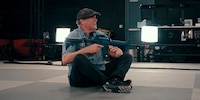
Background information
I spoke with Hollywood star Michael Rooker about Call of Duty: Black Ops 7
by Domagoj Belancic

Bruce Shelley worked on four «Age of Empires» games. In this interview, he explains how the historical setting came about, why children’s books served as the source, and what he thinks of the fourth game.
«Age of Empires» was released nearly 25 years ago. Back then, real-time strategy (RTS) games were spreading like wildfire. The success of «Command & Conquer» and «Warcraft» ensured as much. But no one could have known that the world would be taken by storm by one particular release: a strategy game beginning in the Stone Age and ending in antiquity. Even before «Age of Empires IV» was released, the series had sold over 25 million copies and generated about one billion USD in sales. It’s no wonder, then, that the digitec Community chose the latest instalment for the sixth digitec Playground tournament.
Bruce Shelley has played a decisive role in the success of «Age of Empires». Now in his 70s, he was a designer on the first three instalments as well as the «Age of Mythology» spinoff. But he made a name for himself even before that, working on «Civilization» alongside Sid Meier.
Bruce, when was the last time you played «Age of Empires»?
Bruce Shelley, game designer: I really don’t remember. But I doubt I played it much after we finished it. Wir fingen sofort an, «Age of Empires 2» zu entwickeln. It’s like making sausages. You can keep going (forever), but at some point you’ve got to tie it off and sell one, because it’s a business.
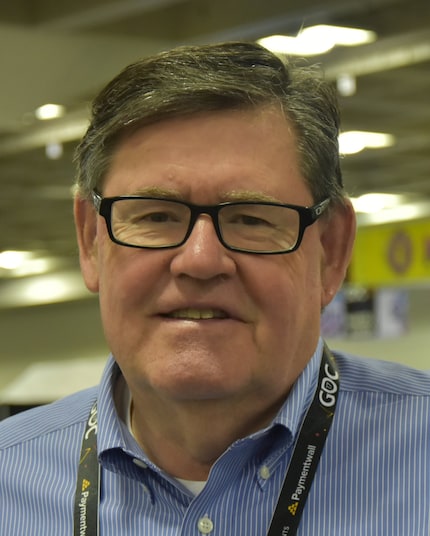
Is this true for all your games – that you yourself don’t play them often?
We play them intensely while we’re making them. We kind of design by playing. «Age of Empires» was practically a three-year production. By the end of it, you look forward to playing something else.
Did you play a lot of multiplayer against each other in the office?
Yes, absolutely. We played existing RTS games regularly at first to be sure we understood how they worked. I remember the day when we got multiplayer working and we could play against each other for the first time. We had eight people playing in our offices on a local area network. After we finished the game, everybody came out of their offices, shaking hands and clapping and cheering. This was a big milestone. And from that day on, the game really started taking shape.
What was your strategy for the multiplayer game?
I think I was more of a builder, so I took more time doing the economy part. I liked that part of the game particularly. But against really good players, I was usually too late to have that going. I played like I was typing with two fingers, whereas people I work with were playing with ten fingers.
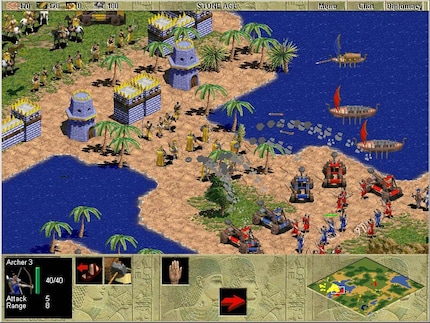
When you were making the game, were you aware that it could become such a huge hit?
Well, I think you hate to be that optimistic. I had worked on the original «Civilization» game years earlier. I knew when we were making that game that we were making something that was going to rock the world. I felt «Age of Empires» was in the same ballpark, but I underestimated how popular it would be. There were some fifty real-time strategy games in development following on the heels of «Command & Conquer» and «Warcraft». But every one of those games was science fiction or fantasy, except one: «Age of Empires» was the only one built in a historic world. And that turned out to be a really positive thing. I’ve since understood that your game has to be different than what else is in the marketplace.
We would play «Warcraft» regularly, and once we got our game going, we found we liked it better. Maybe it was just natural, but we were really enjoying playing our own game. If these hardcore gamers are really enjoying playing our game – that’s really a positive thing.
«Age of Empires» was one of Microsoft’s first games. Microsoft is in a pretty different place today in the gaming business. What was it like to develop a game for Microsoft at that time?
We were lucky in the sense that the senior people in the game group were gamers and could appreciate games. They had a dream or a vision that Microsoft should be publishing game software. There were certainly disputes about the business end of it and things like that. I would say that overall, it was a very positive experience for us. Then there was a leadership change, and everything changed. We were all let go. Microsoft had a new emphasis on the Xbox versus PC.
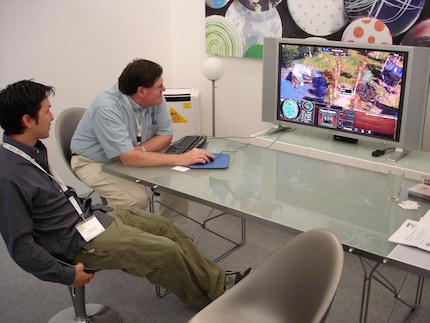
At the beginning of development, how clear was the vision of what the game should look like?
I think the vision of the game, in one sentence, was: We’re going to combine the historic and economic elements of «Civilization» with the real-time gameplay of «Warcraft» and «Command & Conquer». And then we had the idea that we’d start with the Stone Age and go forward. The storyline was so big that we concentrated on ancient times only for «Age of Empires I», and then we transitioned to the Middle Ages in «Age of Empires II». That turned out to be a pretty good decision.
You worked for a board game company in the 80s. Did that help in any way in the development of your games?
I think so. I developed game prototypes at MicroProse with Sid Meier. He always had a dozen little prototype games on his computer. Every once in a while, one would turn into a real game. Back when we were developing board games, we would just get a piece of paper with hexagons or squares on it, or something, cut little pieces out of paper and start moving stuff around. So, we’d start by physically prototyping an idea and then make changes as we worked on it. And that’s essentially how we developed computer games.
When you look back at «Age of Empires», are you still satisfied with the result?
Looking back, I think I’m really happy with the series. I mean, it’s grown, it’s changed, and I think it’s made a lot of people happy. I have at least one former colleague who still plays Age II once a week with his friend from high school. The idea that people are still playing something that we made 25 or 30 years ago is a good feeling.
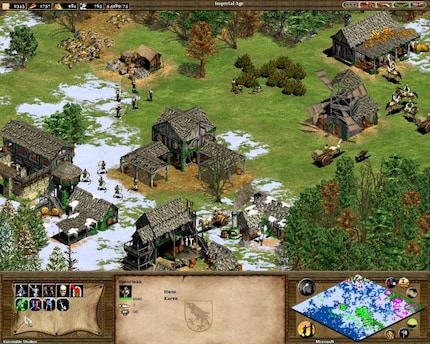
Which instalment do you like best?
That’s a tough one. That’s like asking a parent which of their children they like best. I mean, they each have their own personality. With each of them, you had moments of trial and tribulation – and moments of joy. I think «Age of Empires II» was the one that came together for everybody. But I did also love the look of Age III a lot. That’s one of my favourite periods in history. I’ve always really enjoyed reading about the exploration of the New World. I guess if I had to choose, it would be Age II. But there’s something to love about each instalment – including «Age of Mythology».
How does it feel to see a new team working on «Age of Empires»?
I have no problem with that. It allows the franchise to live on. Most of us who made the originals aren’t involved. I’m happy that they think it's good enough to keep it going. That’s what’s most important to me – that it isn’t forgotten on the back of the shelf forever. There’s a group of people who still play it.
After the genre lay idle for a number of years, RTS seems to be experiencing a revival.
From what I can tell, people want a faster game. A high-quality RTS game used to take an hour or 45 minutes to play. You can finish a game of «League of Legends» or a shooter game in 15 minutes flat, whereas you invest a lot of time in a game of Age or an RTS game. If you lose, you don’t feel so hot. But we had our day in the sun, and we enjoyed it.
Upon the release of «Age of Empires», one journalist described the game as «digital cocaine».
Have you played Age of Empires IV?
I haven’t, no. I’m an old man now. I’m in my 70s, and I’ve realised that after over 40 years of working in game development, there are other things that interest me. When you get to my age, you start thinking about how much time you still have left. You start to wonder: do I really want to spend time playing a game when I could be doing something else – like travelling, or anything else I find more important?
You’ve developed many big games like «Age of Empires», «Civilization» and «Halo Wars». What do you think makes a successful game?
I think the key is that the game is fun. After all, that’s how people talk about a game: either it’s fun, or it isn’t. But as a professional, you have to know what that actually means. To me, it means the player is engaged. A player who makes decisions is an engaged player. Sid Meier once said that a game is a series of interesting decisions. That’s not quite enough of a definition for me. I remember when «Age of Empires» was first published, a journalist called it «digital cocaine». And I thought, okay, we've done our job if we've created digital cocaine. People just keep playing. One more move. Just one more. They want to see what happens next. You lose track of time. People achieve flow. When the decisions you make matter, you become engaged – and without realising what’s going on, you have fun.
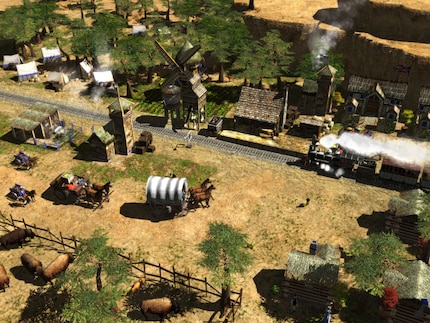
«Age of Empires» is not a historical game – it doesn’t teach you history. How did you decide how deep to delve into the background?
We wanted the player to have the fun, not the historian or game designer. We went to the library and found our bearings in the children’s section. We didn't try to recreate history. Instead, we borrowed from history the things we thought would make a good game. That’s why there’s not really religion or slavery in our games. We left certain things out. «Age of Empires» isn’t a simulation. And yet people are talking about the Phoenicians or other races or cultures that no one would ever have heard of otherwise. Players spoke of the trebuchet – a weapon that had completely fallen by the wayside. In «Age of Empires II», it was so powerful that people all over the country knew what a trebuchet was.
We’ve had letters from parents saying that because of «Age of Empires» their children started reading about history and certain historical figures and peoples.
The first computer game I worked on consisted of four colours: black, white, magenta, and cyan.
Originally, you deliberately didn't want to make a sci-fi game or a fantasy game because there were already enough of those. And yet, after «Age of Empires 3» came «Age of Mythology». How did that happen?
It was a relief to have an opportunity to do something a little different. The artists got to do some unusual things. I think everybody really enjoyed working on it. And it was turned out to be a popular game. There are people who tell me that «Age of Mythology» is their favourite from the series.
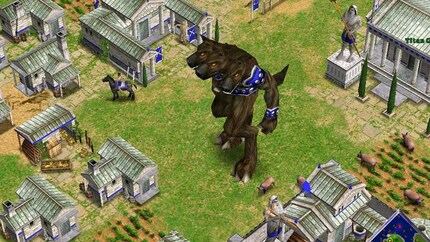
You've worked for many different companies including Ubisoft, Blue Byte, and Zynga. You've been in the business for over 30 years now.
If we go all the way back to paper games, it’s 40 years.
What are the biggest changes the game scene has gone through over all those years?
I wrote a blog post a while ago about Moore's Law, which describes how computer chips gets powerful and cost goes down. I said that the same thing has been happening in game development for the last 40 years. About every six months, there was a significant change in game development. The first computer game I worked on consisted of four colours: black, white, magenta, and cyan. That's what we had to work with. So, the game itself had to be pretty fun, because there was nothing interesting going on in terms of graphics. And then, when we got 16 colours, it was like, «Wow, we’ve got 16 colours!» But we didn't have the power to use all 16. And then, of course, we had 64 – and couldn't use all of them, either.
Today, my phone is a million times more powerful than the first PC I worked on. Graphics have changed drastically. We had to build a new engine almost every time we made a game. Nowadays, we can use Unity or Unreal – and with that, a lot of the heavy work is done. You can create a prototype within a week or two. Just the other day, Wordle came out of nowhere, and now people all around the world are playing it.
You can spend $100 million building a game. But Wordle was built by one guy on his own little machine, and he's changed the world a bit with this little game. This kind of thing has been happening for the 40 years that I’ve been involved, and I think it’s refreshing.
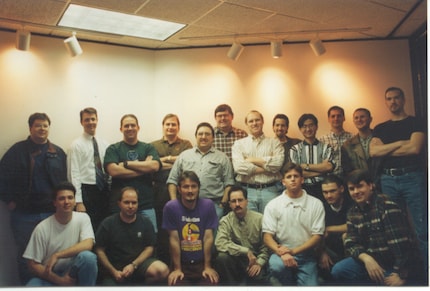
And now you work at Bonus XP, where you collaborated on «Stranger Things» – also a kind of retro game. Are there parallels to «Age of Empires», or is that just a coincidence?
That’s just a coincidence. It’s a small studio started by colleagues some five or six years ago, when I was still working on the Anno series as a consultant. Dave, the president, who had been a programmer at Ensemble had the idea that we should do something for Netflix. And it turned out to be a really interesting idea. I don’t know how many millions of people have played the game since.
But I think I might be getting close to being done here, actually. I should retire. I had two weeks off at Christmas, and I really enjoyed it. But I want to see one more top game on my resume before calling it a day. So I’m staying on for now, but probably not forever.
Before you start your well-deserved retirement, I have one last question about «Age of Empires». Should a new instalment be released, what would you like to see in it?
Back in the day, we had talked about a game set in the 20th or maybe the 19th century, during the era of the American Civil War as well as the many wars in Europe. That would be interesting. The range of weaponry back then got so wild – with tanks, long train vehicles and air power. Warfare changed. The weaponry involved today is so sophisticated and so powerful. I think that somebody will try that at some point. Maybe not in my lifetime, but someday.
As a child, I wasn't allowed to have any consoles. It was only with the arrival of the family's 486 PC that the magical world of gaming opened up to me. Today, I'm overcompensating accordingly. Only a lack of time and money prevents me from trying out every game there is and decorating my shelf with rare retro consoles.
Interesting facts about products, behind-the-scenes looks at manufacturers and deep-dives on interesting people.
Show all
Background information
by Domagoj Belancic

Background information
by Domagoj Belancic

Background information
by Philipp Rüegg